The word “theme” is used in PRINCE2® to refer to the various crucial aspects of a project, why they should be a priority, and how they should be controlled. They are known as themes because they are referred back to throughout the whole PRINCE2 process.
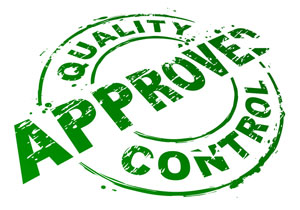 The PRINCE2 themes are Business Case, Organisation, Plans, Progress, Risk, Quality and Change. A few weeks ago, I talked about the Plans theme of PRINCE2, and now it’s time to outline the Quality theme. Of course, we go through all the PRINCE2 themes and processes in our PRINCE2 training courses, to equip you to pass the exams and to give you real-world knowledge that you can apply as soon as you return to work.
The PRINCE2 themes are Business Case, Organisation, Plans, Progress, Risk, Quality and Change. A few weeks ago, I talked about the Plans theme of PRINCE2, and now it’s time to outline the Quality theme. Of course, we go through all the PRINCE2 themes and processes in our PRINCE2 training courses, to equip you to pass the exams and to give you real-world knowledge that you can apply as soon as you return to work.
Quality of the output is a priority within PRINCE2 projects - and of course for all business owners, CEOs and project managers. Once the customer’s expectations of quality have been identified, standards will be documented and processes put in place to check throughout the project lifecycle that these quality standards are going to be met. Part of the quality theme is ensuring that these processes are being used correctly.
Andy Trainer
19 Jul 2012
PRINCE2® Themes – Organisation
The purpose of the Organisation theme is to define and establish the project’s structure of accountability and responsibilities (the who?).
There are four layers of management in a project:
- Corporate or Programme Management
- Project Board
- Project Manager
- Team Managers
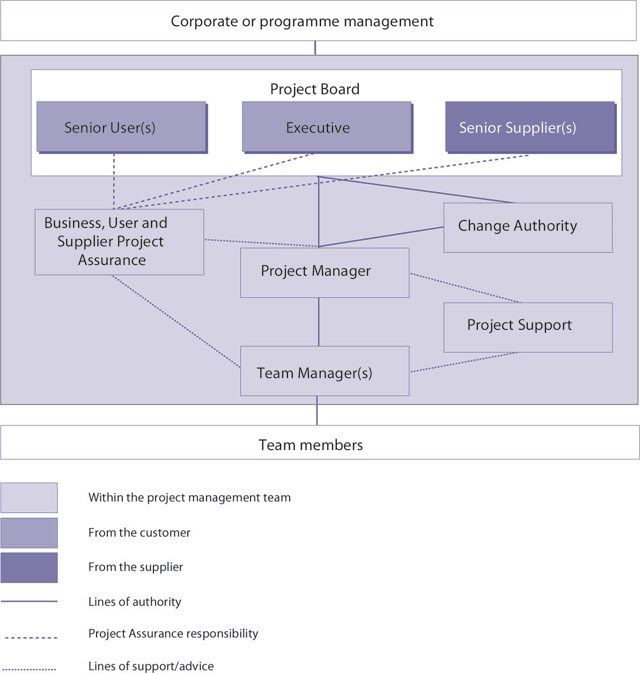
© Crown Copyright 2009. Reproduced under Licence from OGC
- Executive – a key decision maker who owns the business case
- Senior User – Provides user resources. Defines and verifies user requirements and expectations.
- Senior Supplier – Provides supplier resources.
- Project Assurance – Advises on selection of team members. Advises on stakeholder engagement.
- Project Manager – Prepares strategies. Reviews and updates project management team structure. Prepares role descriptions.
- Team Managers – Manage team members. Advises on team members and stakeholder engagement.
- Project Support – Provide administrative support to the project management team.
Some of the PRINCE2 roles cannot be shared or delegated. The Project Manager role cannot be shared or the decision making roles and responsibilities of the Project Board or Project Manager.
Andy Trainer
12 Jul 2007
The Plans theme is fundamental to the PRINCE2® methodology - the other themes (business case, organisation, quality, risk, change and progress) all depend on effective planning before, during and even after each project. A good plan will facilitate communication and control throughout the whole project life cycle.
Effective and structured planning also ensures that everyone involved in the project has the same information to work from and refer to. Crucially, in PRINCE2, all plans are created on a product-based technique – the final objective is identified first and then the plan is made of how to deliver this product.
Our PRINCE2 courses cover all of the PRINCE2 themes in detail, with a focus on real-life application of this knowledge.
The Planning Horizon
PRINCE2 can be applied to all scales of project, but detailed planning can be difficult for lengthier projects. If this is the case, the project will be broken down into smaller stages, and each of these will have separate plans. The planning horizon is the agreed length of time for which it is appropriate – or possible – to plan in detail.
Contents of PRINCE2 Plans
The different types of plans in a PRINCE2 project will follow a similar structure, in order to be easily accessible to everyone involved in the project. The level of detail that goes into each level of plan is determined by the scale of the project.
Andy Trainer
20 Jun 2012
PRINCE2® Themes – Risk Management
The purpose of the Risk theme is to identify, assess and control uncertainty and, as a result, improve the ability of the project to succeed.
Risk taking in projects is inevitable since projects are enablers of change and change introduces uncertainty, hence risk. Management of risk should be systematic and not based on chance. It is about the proactive identification, assessment and control of risks that might affect the delivery of the project’s objectives.
The project should establish and maintain a cost effective risk management procedure. The aim is to support better decision making through a good understanding of risks – their causes, likelihood, impact, timing, and the choice of responses to them.
Management of risk is a continual activity, performed throughout the life of the project. Without an ongoing and effective risk management procedure it is not possible to give confidence that the project is able to meet its objectives and therefore whether it is worthwhile for it to continue. Hence effective risk
management is a prerequisite of the continued business justification principle.
Risk management:
For risk management to be effective, risks need to be:
- Identified This includes risks being considered that could affect the achievement of the project’s objectives, and then described to ensure that there is a common understanding of these risks
- Assessed This includes ensuring that each risk can be ranked in terms of estimated likelihood, impact and immediacy, and understanding the overall level of risk associated with the project
- Controlled This includes identifying appropriate responses to risks, assigning risk owners, and then executing, monitoring and controlling these responses.
Risk Management procedure
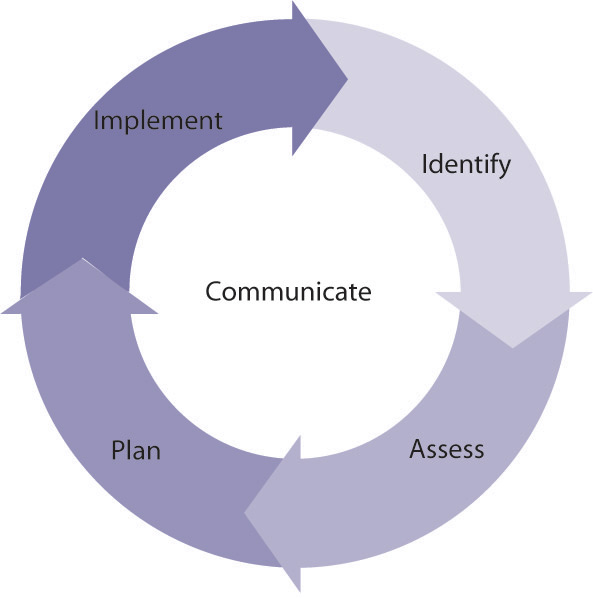
© Crown Copyright 2009. Reproduced under Licence from OGC
PRINCE2 recommends a risk management procedure comprising the following five steps:
- Identify (context and risks)
- Assess (i.e. Estimate and Evaluate)
- Plan
- Implement
- Communicate
The first four steps are sequential, with the ’Communicate’ step running in parallel because the findings of any of the other steps may need to be communicated prior to the completion of the overall process. All of the steps are iterative in nature in that when additional information becomes available, it is often necessary to revisit earlier steps and carry them out again to achieve the most effective result.
In addition to our PRINCE2 Courses we can also arrange Risk Management course on a private basis on dates to suit.
Andy Trainer
12 Jul 2007
We have two free PRINCE2® eBooks to help you prepare for and pass your exams, click the links below to download and start learning:
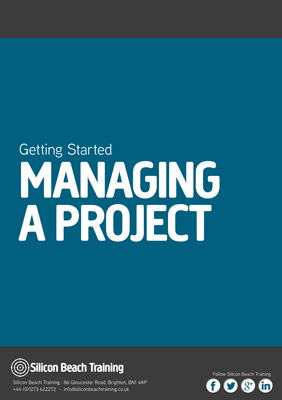
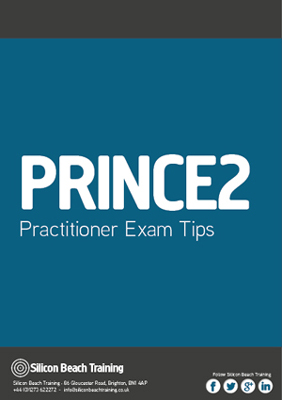
How to Manage a Project - Getting Started
This eBook will take you through the PRINCE2 methods of managing a project from start to finish. A great PRINCE2 revision guide.
PRINCE2 Practitioner Exam Tips
This eBook will help you prepare for your PRINCE2 Pratitioner Exam.
These are excellent free PRINCE2 Training revision guide to help you prepare for your exam and can be downloaded on your computer, mobile and tablet to carry around where you need them.
Our PRINCE2 eBooks have been written by our expert PRINCE2 trainers, drawing on years of experience.
PRINCE2 is a structured method for effective project management. It is the standard used extensively by the UK Government and is widely recognised and used in the private sector, both in the UK and internationally. Silicon Beach Training provides a range of PRINCE2 Trainingcourses in Brighton, Sussex, including PRINCE2 Practitioner Training and PRINCE2 Foundation Training.
For more resources like these visit our PRINCE2 Resources section.
PRINCE2, the method, is in the public domain, offering non-proprietary best-practice guidance on project management. PRINCE2 is a registered trademark of AXELOS Limited.
Andy Trainer
18 Nov 2010